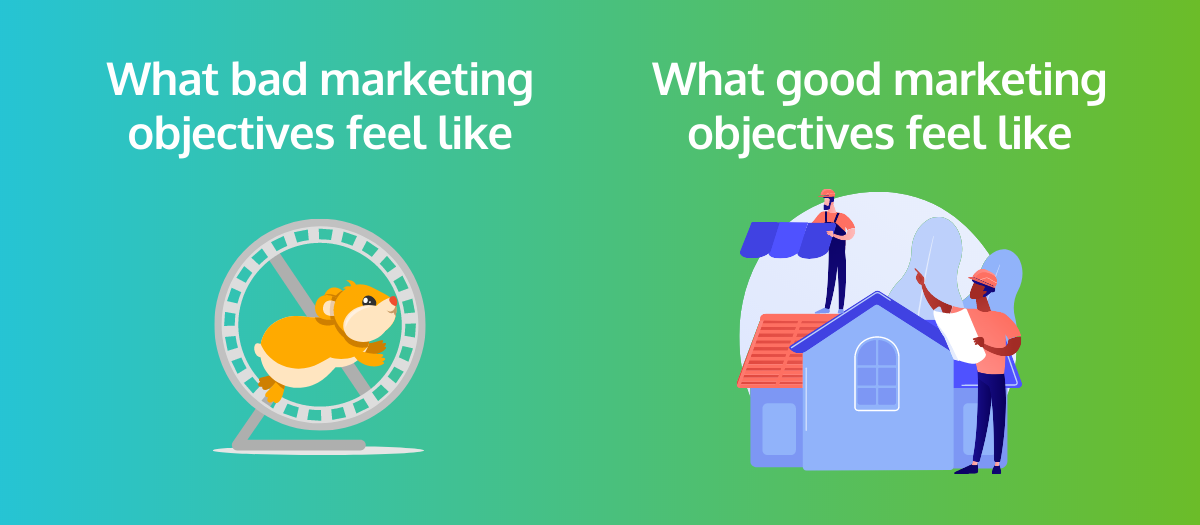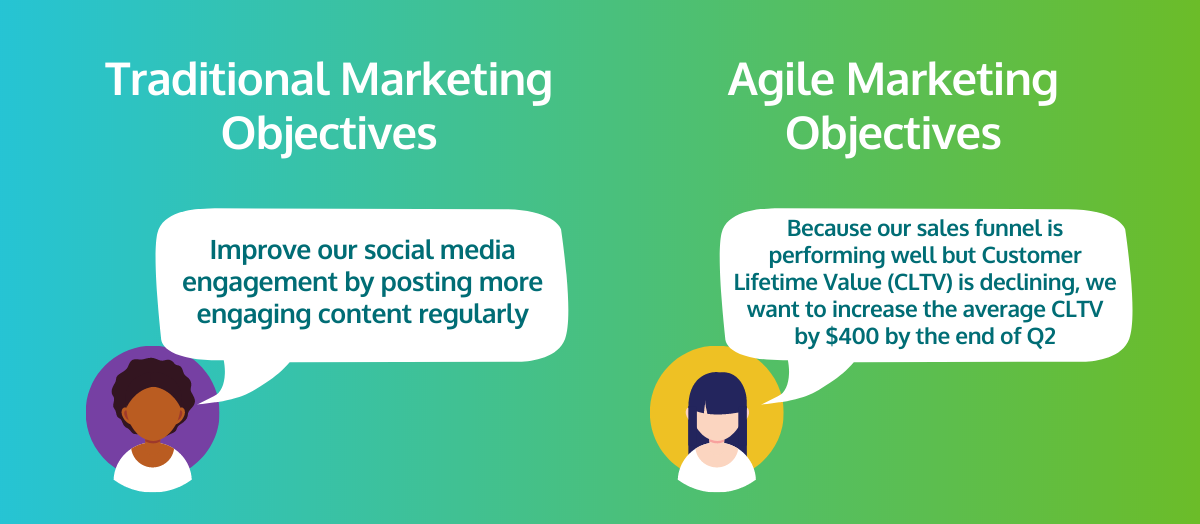-
- marketing agility
- Teams
- Organizations
- Education
- enterprise
- Articles
- Individuals
- Transformation
- Solution
- Leadership
- Getting Started
- business agility
- agile management
- going agile
- Frameworks
- agile mindset
- Agile Marketing Tools
- agile marketing journey
- Agile Marketers
- organizational alignment
- People
- Selection
- (Featured Posts)
- agile journey
- Metrics and Data
- Kanban
- strategy
- Resources
- Why Agile Marketing
- agile project management
- self-managing team
- Meetings
- agile adoption
- scaled agile marketing
- tactics
- Scrum
- scaled agile
- agile marketing training
- agile takeaways
- Agile Meetings
- agile coach
- Agile Leadership
- Scrumban
- enterprise marketing agility
- state of agile marketing
- team empowerment
- agile marketing mindset
- agile marketing planning
- agile plan
- AI
- Individual
- Intermediate
- Team
- Videos
- kanban board
- Agile Marketing Terms
- agile marketing
- agile transformation
- traditional marketing
- FAQ
- agile teams
- Agile Marketing Glossary
- CoE
- agile
- agile marketer
- agile marketing case study
- agile marketing coaching
- agile marketing leaders
- agile marketing methodologies
- agile marketing metrics
- agile pilot
- agile sales
- agile team
- agile work breakdown
- cycle time
- employee satisfaction
- marketing value stream
- marketing-analytics
- remote teams
- sprints
- throughput
- work breakdown structure
- News
- Scrumban
- agile brand
- agile marketing books
- agile marketing pilot
- agile marketing transformation
- agile review process
- agile team charter
- cost of delay
- hybrid framework
- pdca
- remote working
- scrum master
- stable agile teams
- startups
- team charter
- team morale
- user story
- value stream mapping
- visual workflow

Imagine someone pours years of work into building the world’s fastest racecar only to then drive it straight into a lake. That’s a bit like what happens when marketing teams throw themselves into work built around the wrong marketing objectives.
Sure the engine/operations are working fantastically, but it’s all going in the wrong direction.
Getting stuck with bad objectives can feel wasteful, frustrating, and demotivating. Marketers sense that their objectives are pulled out of thin air and don’t necessarily connect to company-wide strategic goals. As a result, effective prioritization becomes impossible and the work marketing does can easily start to feel almost irrelevant.
Frankly, proving the importance of marketing is hard enough without adding bad objectives to the mix.
It’s time to make bad marketing objectives a thing of the past.
What Are Marketing Objectives?
Before you skip over this section, we promise the answer is more important than you think.
A marketing objective is a defined measurable goal for a marketing activity. That’s the basic definition, but if we break that down there’s a lot to learn.
Let’s start with “defined and measurable goal.”
This is where so many marketing objectives fail from the start. For example, “improving landing page performance” is not a defined and measurable goal. What does success look like? If, for example, the CTR improves by 15% was the objective met?
The goal itself is not specific and there are no metrics attached to it.
But even marketing objectives that meet this basic definition can easily set you up for failure. Let’s say your objective is to improve CTR by an average of 15% across all landing pages. That’s great, but if that goal is achieved what does it mean for the business?

Let’s say the main business challenge is retention. In this case, marketing is focusing on pushing more people into a bucket that’s leaking.
This is what the basic definition leaves out: what marketing objectives are tied to. Unless your objectives are directly tied to broader strategic goals, even if you get that basic definition right, the result is still going to be marketing that doesn’t really make a difference.
What Makes Marketing Objectives so Important?
Obviously, at their core marketing objectives are what makes marketing relevant. They are what should be driving your marketers to get creative, solve problems, and find the best possible way to achieve their goals.
Again, even the most brilliant marketers operating at the top of their game aren’t going to be capable of substantially impacting their organization without the right objectives.
Then there’s how marketing objectives are handled by senior leaders. When they’re too specific and try to tell marketers HOW to achieve them instead of simply WHAT should be achieved, they tie marketing’s hands.
Instead, marketing objectives should point in a direction that marketers can find the best path towards. This approach encourages autonomy, accountability, and creativity get fostered while ensuring the work they do contributes to strategic goals.
The result is that marketers feel they have the autonomy they need to be effective combined with the motivation of knowing that achieving their goals will translate into a real business impact.

Key Traits of Effective Marketing Objectives (SMART)
Time for some good news, the elements that lead to great marketing objectives aren’t that hard to follow. The simplest way to explain them is through the lens of SMART goals.
The SMART acronym stands for:
Specific (what needs to happen, who will do it, etc.)
Measurable (what metrics will we use to define success?)
Achievable (is this realistic within the time frame?)
Relevant (is this tied to broader goals?)
Time-Bound (what does the timeframe look like for the objective and its steps?)
Just a reminder, specific does not mean specifying how the work will be done. It only refers to the goal itself being specific.
You can use SMART as a kind of checklist you refer to every time you develop marketing objectives.
Agile vs Traditional Marketing Objectives
All of the advice we’ve discussed so far ties into the Agile approach to marketing objectives. But besides following all that advice, what really differentiates the two?
One major difference is in flexibility. Traditional marketers are often reluctant to adjust and adapt as they go. As a result, you often have marketers working towards goals they know are completely unrealistic or unimportant. It’s hardly shocking that this translates into poor morale, employee retention problems, and just plain frustration.
Thinking back to the car analogy, it’s like planning how you’re going to drive somewhere 9 months in advance and then refusing to adjust it when there’s traffic or a road closure. You end up wasting time just so you don’t have to deviate from the plan you made ages ago.
At the end of the day, if your marketing objective no longer meets the SMART criteria, you shouldn’t be afraid to change it.
Then there’s the importance of Agile’s culture of continuous improvement. Even in the best Agile teams, not all marketing objectives are going to be perfect. That’s why Agile processes are put in place to ensure teams regularly meet to discuss what’s going well, what’s not, and generate ideas for improvement.
This ensures teams are consistently looking for ways to improve how objectives are set, managed, executed, and adjusted over time.
For example, your marketing objective might be to increase the sales of a particular product by 40% by the end of Q2. If after a month of working towards that objective, you realize that the product you’re focusing on still is performing very poorly but a YouTube influencer talked about another one of your products resulting in a sharp increase in sales there, it makes more sense to adjust your objectives to meet this new reality.
Now you’ve got a unique opportunity to capitalize on this sudden exposure even if it means neglecting the product you had planned to focus on.
How to Set Realistic Agile Marketing Objectives
There’s no single trick you can implement to instantly get more realistic marketing objectives. Instead, the only way to achieve this is by considering available resources like budgets, capacity, and expertise within your team.
Then. you need internal feedback loops and close collaboration between marketers and senior leaders to build on those objectives. After all, senior leaders have insights into broader strategic objectives while marketers have a better sense of what’s realistic for them.
Both sides need to be ready to use SMART and discuss those criteria openly while incorporating learnings from previous objectives. This ensures that when marketing objectives end up being unrealistic, unspecific, etc., lessons are learned and applied next time.
The marketing and business environments you operate in are never going to remain static. That’s why only consistently evaluating and improving how objectives are set can ensure they will remain realistic in the long run.
Before proceeding to see some examples of marketing objectives, why don't you take a minute to see if bad processes are eating up your marketing budget?
Marketing Objective Examples
Let’s combine all the advice we’ve shared so far into some examples that really show the difference between traditional and Agile marketing objectives.
A traditional marketing objective might be something like “improve our social media engagement by posting more engaging content regularly.”
There’s a lot to unpack about why this kind of marketing objective misses the mark because it essentially fails all of the SMART criteria. It’s not specific because it’s unclear what the definition of “improve” is. Then again, it’s too specific because it prescribed HOW the marketers should achieve the objective.
It’s not measurable because there’s no metrics connected to it. It might be achievable but we honestly have no idea because it fails those first two criteria. It’s probably not relevant because it’s unclear how increasing social media engagement is going to drive strategic business goals. Finally, there’s no specific timeframe for the objective.
Now let’s compare that to a better example.
“Because our sales funnel is performing well but Customer Lifetime Value (CLTV) is declining, we want to increase the average CLTV by $400 by the end of Q2.”
Here we have a marketing objective that’s specific, gives marketing full freedom to find the best way to achieve it, has a clear metric, feels achievable, and is clearly connected to strategic goals. Any marketer reading this can easily understand why this is an objective and how its success will be important to the business.

Next Steps You Can Take
Great marketing objectives are clearly about much more than the objectives themselves. They require an entire mindset and set of approaches to back them up. From building a culture of continuous improvement to embracing greater autonomy for marketing teams to execute on their objectives, many traditional marketing organizations have a lot of changes they need to make.
Fortunately, we’ve taken years of experience helping individuals, teams, and organizations implement Agile marketing and turned it into a range of focused and digestible mini-courses we call Carabiners. From building the right culture to defining “done”, you’ll find a wide range of easy to digest lessons on everything you’ll need to create better marketing objectives.
Topics discussed
Improve your Marketing Ops every week
Subscribe to our blog to get insights sent directly to your inbox.


